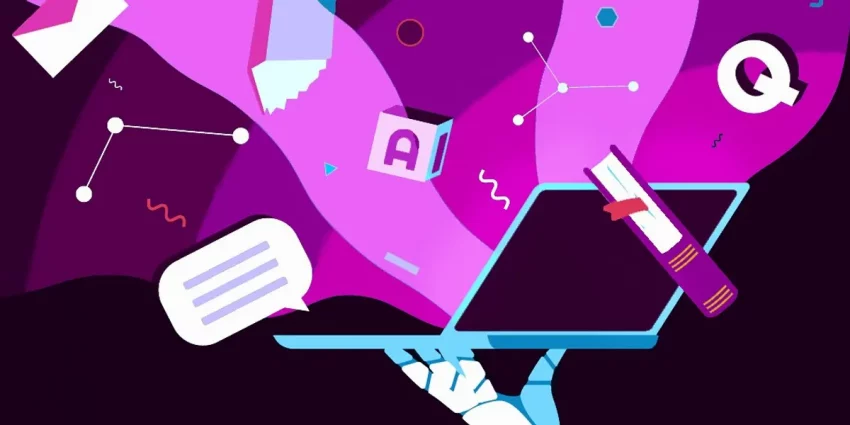It has infiltrated our information feeds, time period papers, and inboxes. It’s an astonishingly abundant surplus that businesses have sprung, as has both current strikes and counterstrikes. A few companies offer companies the ability to identify AI-produced textual content by examining the materials, while others claim that their tools will offer to “humanize” your AI-created text and render it undetectable. There is considerable uncertainty in the performance of both types of tools, and as chatbots improve, it can become a very hard task to know whether sentences were constructed by human or by a machine.Google DeepMind Debuts
Here’s another approach: Including some form of watermark containing content attestation to the beginning, enabling humans to much more easily verify whether the text was created with the help of artificial intelligence. A new study by Google DeepMind, as reported today in Nature, shows the route to achieve that. The system, called SynthID-Text, doesn’t compromise “the quality, accuracy, creativity, or speed of the text generation, says Pushmeet Kohli, vice chairman of analysis at Google DeepMind and a coauthor of the paper. But the researchers acknowledge that their system is way from foolproof, and isn’t but out there to everybody—it’s extra of an indication than a scalable answer.
Although SynthID is not a magic bullet for the detection of AI generated content, it serves as a key component in the development of robust AI detection tools.
The Rise of Content Credentials Google DeepMind Debuts
Content credentials have been one of the hottest topics in images and video and have been viewed as a solution to counter the proliferation of deepfakes. Tech companies and major media outlets have banded together in a program known as C2PA, which has been able to establish a mechanism to associate encrypted metadata with images and video files to tell if they are authentic or created with AI. However, textual content is a significantly more difficult problem, as textual content can easily be manipulated so as to hide or erase a watermark. Although SynthID-Text is not the first attempt at building a system for watermarking textual content, it is the first to be tested on 20 million snippets.
External consultants working on content credentials view the DeepMind study as a step. It has promise for enhancing the use of immutable content credentials from C2PA for both textual documents and plain text,” remarks Andrew Jenks, Microsoft’s director of media provenance and govt chair of C2PA. This is a challenging problem to solve, and it’s nice to see some movement there, says Bruce Mac McCormack, of the C2PA steering committee.
How Google’s Text Watermarks Work Google DeepMind Debuts
It modifies a small number of the words {that} a chatbot generates as spoken to the bystander in a way that is undetectable to humans but is detectable by a SynthID detector. These perturbations add a statistical fingerprint to the generated speech,” the authors note in the paper. In the watermark detection stage, the signature can be measured to see if the text was derived from the LLM that was watermarked.
The language models energy chatbots use operate by generating the flow of the sentence word by word, considering the history so far (i.e., predecessors) before being able to choose a candidate next word. In a nutshell, SynthID-Text messes up by allocating quantity scores randomly to possible phrases and generating phrases with higher scores by the LLM. In a later step, a detector may ingest one part of the textual content and compute its global score; water-marked textual content may have a higher score than non-water-marked. DeepMind staff verified the effectiveness of their system in comparison to other textual content watermarking tools that manipulate the time course, and they found their system performed better at identifying watermarked text.
Nevertheless, the authors of their paper admit that it is still easy to modify a Gemini-created textual content and fool the detector. Although customers may not be in a position to identify which keywords to change, in the event that they edit the text substantially and even ask another chatbot to paraphrase the text, the watermark would likely be disguised.
Testing Text Watermarks at Scale
In order to truly ensure that SynthID-Text did not lead chatbots to deliver a poorer response, the team looked at it on a set of 20 million prompts sent to Gemini. Half of these prompts had been routed to the SynthID-Text system and bought a watermarked response, whereas the opposite half bought the usual Gemini response. Judging by the “thumbs up” and “thumbs down” suggestions from customers, the watermarked responses had been simply as passable to customers as the usual ones.
All of which is good for Google and the developers developing on Gemini. However, preventing the full cost of identifying AI-generated textual content (often called AI slop) would need a variety of other AI companies to implement the watermarking technologies – ideally in an interoperable fashion so that one detector could figure out the text from a variety of LLMs. Even if – and please realize this may be the least likely event-all of the leading AI companies agreed to some sort of settlement, there would still be the problem of open-source LLMs, which could just be exploited to remove any watermarking performance.
MacCormack of C2PA states that, when one envisions almost, detection is a particular drawback, when one considers virtually in relation to implementation. “There are challenges with the review of text in the wild, he says, “where you would have to know which watermarking model has been applied to know how and where to look for the signal. Overall, he says, the researchers nonetheless have their work lower out for them. This is not an ending, but a beginning,” says MacCormack, “but it is the first step in a very long road.
